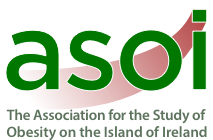Hospital Service Use Among Children With Obesity in Ireland: A Micro-costing Study
- Categories: Adolescence, Childhood, Economic Costs, Severe Obesity
Type Article
Journal Article
Authors
L. Tully; J. Sorensen; G. O'Malley
Year of publication
2022
Publication/Journal
Child Care in Practice
Volume
Issue
Pages
Abstract
Background: Childhood obesity affects around 7–8% of children in Ireland and is associated with increased risks of health complications. Data on healthcare resource use and the related costs for children with obesity are important for research, future service-planning, efforts to reduce the burden on families, and care pathways. However, there is little or no data available to describe these in Ireland. Methods: We undertook a retrospective chart review for 322 children attending a national paediatric weight management service to assess their hospital service utilisation, and the associated costs, over a four-year period. We used a micro-costing approach and estimated unit costs for different types of hospital services. Multivariable negative binomial regression analyses and Cragg hurdle models were used to assess characteristics associated with type, frequency and costs of hospital care. Results: Eighty-two percent of children had severe obesity, and thirty-eight percent had a co-morbid condition. Over the four-year period, children had a mean of 27 (median 24, IQR 16–33) episodes of care at a mean cost of €2590 per child (median €1659, IQR 1026–3103). The presence of a co-morbid condition was associated with more frequent visits. Neither severity of obesity nor socioeconomic status were associated with overall service utilisation. The Cragg hurdle model did not identify statistically significant differences in hospital costs according to participant characteristics. Conclusion: Children with obesity frequently visit a variety of paediatric services and children with co-morbid conditions have greater levels of hospital utilisation. Further research is needed with larger sample sizes to explore variation in healthcare utilisation in this population, and the relationship between common co-morbidities and weight status. This would facilitate assessment of the implications for care pathways and examination of associations between patient outcomes and related healthcare costs and cost-effectiveness.
